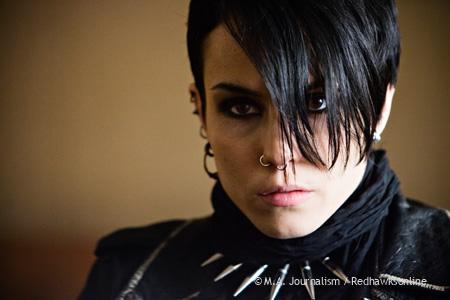Fincher returns to his filmmaking roots
Anna Scholl, Talon Staff Writer
Remakes, reboots, re-visions, most of the time when movie-goers hear these words, eyes are rolled and hopes are dropped. The same thing happened when an American version of The Girl with the Dragon Tattoo was announced. Fans of Stieg Larsson’s original crime-thriller novels were disappointed and skeptical.
However, when the film opened in theaters, they were pleasantly surprised. David Fincher’s adaptation of the best-selling book contains a surplus of gritty filming techniques that borrow from his previous films in order to breathe life into Stieg Larsson’s first posthumous novel, and is set to be released on DVD March 20th.
It should be noted that the story progression revolves around the intense violence, sexuality, and intensity that garnered the film a strict ‘R’ rating from the Motion Picture Association of America (MPAA). It’s cruel, it’s malicious, and it’s meant to anchor and over-bearing message of sadistic crime and crass logistics in your thoughts with every scene. However, beneath the promiscuity and controversy is a great level of artistic value seen with the cinematography and the emotions the audience feels for the characters.
Within the purposeful (and even respectful) insensitivity of the movie is a story: a reporter, Mikael Blomkvist (Daniel Craig), acceptis a job offer from Henrik Vanger (Christopher Plummer), a retired industrialist, who believes one of his many relatives is responsible for the disappearance of his niece, Harriet Vanger. With the help of abnormal, street urchin, punk girl Lisbeth Salander (Rooney Mara), Blomkvist uncovers the several clues left behind in order to track down the culprit.
It’s not often that movie already has you wide-eyed and mouth ajar in the first few seconds. The opening titles resemble Fincher’s 90’s classic, Fight Club. An edgy remix of Led Zeppelin’s “Immigrant Song” by Nine Inch Nails front man Trent Reznor and Atticus Ross, accompanied by the surreal imagery of distorted, humanized shapes, makes the audience is speechless already.
David Fincher was once known for making controversial, mind-bending films, like his earlier works Se7en and Fight Club, and The Game. Now, he’s better recognized as the director of Oscar-Nominees The Curious Case of Benjamin Button and The Social Network. While all are great films, it was a treat to see Fincher return to his bolder works and create a film we can all simultaneously grab at our arm rests and say “that was intense”.
Platinum Dune’s remake of Wes Craven’s A Nightmare on Elm Street was the movie that introduced many to actress Rooney Mara. When news got out that she was cast to play Lisbeth in Fincher’s American interpretation of Stieg Larsson’s book, many were skeptical. How could anyone believe in her performance if all they could think about was a screaming Nancy Holbrook running from an out-for-revenge Freddy Krueger? This brought out the unexpected and unimaginable from both Mara and her make-up artist. When that coarse, disconnected, Swedish accented guise appeared on screen with her bleached eyebrows, porcupine hair, and assortment of body art and piercings, the audience knew that this was the odd-ball hacker they had read about in the original novel. Rooney Mara proved us wrong, and we’re happy that she did.
Despite the criticism of Fincher’s adaptation being an unnecessary remake, its unique story-telling gave it more of a sense of crime thriller than any previous. Despite the hardcore ‘R’ rating, the film is still relevant when it comes to intelligent, film making-craft. Cinematic ecstasy at its finest.

